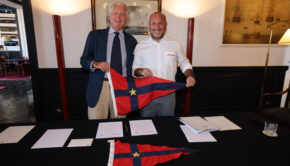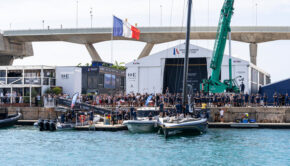Designing the new America’s Cup Class
Published on October 15th, 2017
Whenever there is a new winner of the America’s Cup, and when that team wants to change the boat, disruption occurs. Not knowing the details is hard on existing teams to maintain their commercial partners, or for new teams to get established.
As losing skipper Jimmy Spithill noted, “You need to know where the goal posts are. What is the game you are playing? That’s a position a lot of people are in. If you are in the Team New Zealand or Italian camp you know, you’ve got a pretty good idea. But for the rest of us, before you go sign up to something, you really have to know what it is.”
Team New Zealand understands this, having been on the outside looking in. After Spithill won the 2013 America’s Cup on September 25, his team didn’t release the Protocol for over eight months and then changed the boat another nine months later. The Kiwis have set a more stringent timeline:
June 26, 2017 – Won the 35th America’s Cup and announced Challenger of Record.
July 18, 2017 – Released some details to be in the Protocol.
September 11, 2017 – Switch to monohull confirmed.
September 28, 2017 – Released Protocol which described a 75-foot boat.
November 30, 2017 – AC75 Class concepts released to key stakeholders.
January 1, 2018 – Entries for Challengers open.
March 31, 2018 – AC75 Class Rule published.
The mission now is to finalize plans for the boat, and the Kiwi syndicate is intending to invite potential challengers to Auckland next month to present to them their vision for the new America’s Cup class and get feedback.
Among the objectives to achieve are:
• A boat suitable for head-to-head match racing and close competition.
• To provide competitive racing across light and strong conditions.
• To incorporate practical requirements for launching, retrieval, and transportation.
The design project is led by Dan Bernasconi, who was the Kiwi syndicate’s technical director for the 35th America’s Cup campaign. Having been used to being handed a set of parameters to work within, Bernasconi admitted it feels strange to be the one to set the parameters.
“It is a weird process for us. We are so used to pushing hard against a rule and trying to make the boat faster. It feels strange when you don’t have a rule to work to, as we usually try to work the edges to make the boat faster and faster,” he said. “We want to have a boat that is good for match racing, while still being a really high-performance boat. But there is a lot of other criteria as well.”
Source: New Zealand Herald, Scuttlebutt









 We’ll keep your information safe.
We’ll keep your information safe.